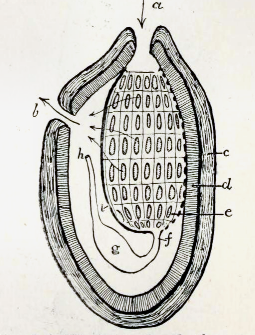|
Ascidiidae
Ascidiidae ("same-sac family") is a family of tunicates in the class Ascidiacea. Some species contain elevated amounts of vanadium. There are 4 genera: * '' Ascidia'' * '' Ascidiella'' * '' Fimbrora'' * ''Phallusia ''Phallusia'' is a genus of tunicates of the family Ascidiidae, which includes the following species: *''Phallusia aperta'' (Sluiter, 1904) *''Phallusia arabica'' Savigny, 1816 *''Phallusia barbarica'' Kott, 1985 *''Phallusia colleta'' (C. Monni ...'' * '' Psammascidia'' See also * Vanabin References * Tunicate families {{tunicata-stub ... [...More Info...] [...Related Items...] OR: [Wikipedia] [Google] [Baidu] |
Ascidia
''Ascidia'' is a genus of tunicates in the family Ascidiidae. Selected species * '' Ascidia achimotae'' Millar, 1953 * '' Ascidia adamanensis'' Oka, 1915 * '' Ascidia ahodori'' Oka, 1927 * '' Ascidia alisea'' Monniot & Monniot, 2006 * '' Ascidia alpha'' Tokioka, 1953 * '' Ascidia alterna'' Monniot & Monniot, 1991 * '' Ascidia archaia'' Sluiter, 1890 * '' Ascidia arenosa'' Hartmeyer, 1898 * '' Ascidia armata'' Hartmeyer, 1906 * '' Ascidia aspera'' Brunetti, 2007 * '' Ascidia austera'' Sluiter, 1904 * ''Ascidia aximensis'' Millar, 1953 * '' Ascidia azurea'' Monniot & Monniot, 1996 * '' Ascidia bathybia'' Hartmeyer, 1922 * '' Ascidia bifissa'' Sluiter, 1895 * ''Ascidia bocatorensis'' Bonnet & Rocha, 2011 * ''Ascidia caguayensis'' Millar & Goodbody, 1974 * ''Ascidia callosa'' Stimpson, 1852 * ''Ascidia canaliculata'' Heller, 1878 * ''Ascidia cannelata'' Oken, 1820 * ''Ascidia capillata'' Sluiter, 1887 * ''Ascidia caudata'' Heller, 1878 * ''Ascidia celtica'' C. Monniot, 1969 * ''Asci ... [...More Info...] [...Related Items...] OR: [Wikipedia] [Google] [Baidu] |
Ascidiella
''Ascidiella'' is a genus of tunicates belonging to the family Ascidiidae. The genus has almost cosmopolitan distribution In biogeography, a cosmopolitan distribution is the range of a taxon that extends across most or all of the surface of the Earth, in appropriate habitats; most cosmopolitan species are known to be highly adaptable to a range of climatic and en .... Species: *'' Ascidiella aspersa'' *'' Ascidiella scabra'' *'' Ascidiella senegalensis'' References Ascidiidae Tunicate genera {{Tunicata-stub ... [...More Info...] [...Related Items...] OR: [Wikipedia] [Google] [Baidu] |
Phallusia
''Phallusia'' is a genus of tunicates of the family Ascidiidae, which includes the following species: *''Phallusia aperta'' (Sluiter, 1904) *''Phallusia arabica'' Savigny, 1816 *''Phallusia barbarica'' Kott, 1985 *''Phallusia colleta'' (C. Monniot & F. Monniot, 1970) *''Phallusia depressiuscula'' (Heller, 1878) *''Phallusia fragilis'' Bonnet & Rocha, 2011 *''Phallusia fumigata'' (Grube, 1864) *''Phallusia ingeria'' Traustedt, 1883 *''Phallusia julinea'' Sluiter, 1915 *''Phallusia koreana'' Traustedt, 1885 *''Phallusia kottae'' (Monniot & Monniot, 1996) *''Phallusia mammillata'' (Cuvier, 1815) *''Phallusia millari'' Kott, 1985 *''Phallusia nigra'' Savigny, 1816 *''Phallusia obesa'' (Herdman, 1880) *''Phallusia philippinensis'' Millar, 1975 *''Phallusia polytrema'' (Herdman, 1906) *''Phallusia recifensis'' (Millar, 1977) *''Phallusia suensonii'' Traustedt, 1885 Gallery File:Phallusia mammillata.jpg, ''P. mamillata'' File:Phallusia_mammillata_(Cuvier,_1815).jpg, ''P. mamillata'' F ... [...More Info...] [...Related Items...] OR: [Wikipedia] [Google] [Baidu] |
Phallusia Mammillata
''Phallusia mammillata'' is a solitary marine tunicate of the ascidian class found in the eastern Atlantic Ocean and the Mediterranean Sea. Description ''Phallusia mammillata'' is a solitary species of ascidian and can grow to a height of about . The tunic is a translucent, bluish-white colour and is covered with irregular rounded lobes or mounds. Distribution This tunicate is found on rocky, sandy or muddy substrates in the northeastern Atlantic Ocean, the North Sea, the English Channel and the Mediterranean Sea to depths of about . Biology Like all tunicates, ''Phallusia mammillata'' has a thick leathery tunic containing a cellulosic material. The tunic encloses a sac-shaped cavity with separate siphons through which water is drawn in and expelled. The animal feeds on the planktonic particles that it filters from the incoming seawater by passing it through a mucous net. ''Phallusia mammillata'' is one of a small number of ascidians that accumulate the element vanadium in t ... [...More Info...] [...Related Items...] OR: [Wikipedia] [Google] [Baidu] |
Tunicate
Tunicates are marine invertebrates belonging to the subphylum Tunicata ( ). This grouping is part of the Chordata, a phylum which includes all animals with dorsal nerve cords and notochords (including vertebrates). The subphylum was at one time called Urochordata, and the term urochordates is still sometimes used for these animals. Despite their simple appearance and very different adult form, their close relationship to the vertebrates is certain. Both groups are chordates, as evidenced by the fact that during their mobile larval stage, tunicates possess a notochord, a hollow dorsal nerve cord, pharyngeal slits, post-anal tail, and an endostyle. They resemble a tadpole. Tunicates are the only chordates that have lost their Myomere, myomeric segmentation, with the possible exception of the seriation of the gill slits. However, Doliolida, doliolids still display segmentation of the muscle bands. Some tunicates live as solitary individuals, but others replicate by budding and be ... [...More Info...] [...Related Items...] OR: [Wikipedia] [Google] [Baidu] |
Family (biology)
Family (, : ) is one of the eight major hierarchical taxonomic ranks in Linnaean taxonomy. It is classified between order and genus. A family may be divided into subfamilies, which are intermediate ranks between the ranks of family and genus. The official family names are Latin in origin; however, popular names are often used: for example, walnut trees and hickory trees belong to the family Juglandaceae, but that family is commonly referred to as the "walnut family". The delineation of what constitutes a family—or whether a described family should be acknowledged—is established and decided upon by active taxonomists. There are not strict regulations for outlining or acknowledging a family, yet in the realm of plants, these classifications often rely on both the vegetative and reproductive characteristics of plant species. Taxonomists frequently hold varying perspectives on these descriptions, leading to a lack of widespread consensus within the scientific community ... [...More Info...] [...Related Items...] OR: [Wikipedia] [Google] [Baidu] |
Class (biology)
In biological classification, class () is a taxonomic rank, as well as a taxonomic unit, a taxon, in that rank. It is a group of related taxonomic orders. Other well-known ranks in descending order of size are domain, kingdom, phylum, order, family, genus, and species, with class ranking between phylum and order. History The class as a distinct rank of biological classification having its own distinctive name – and not just called a ''top-level genus'' ''(genus summum)'' – was first introduced by French botanist Joseph Pitton de Tournefort in the classification of plants that appeared in his '' Eléments de botanique'' of 1694. Insofar as a general definition of a class is available, it has historically been conceived as embracing taxa that combine a distinct ''grade'' of organization—i.e. a 'level of complexity', measured in terms of how differentiated their organ systems are into distinct regions or sub-organs—with a distinct ''type'' of construction, whic ... [...More Info...] [...Related Items...] OR: [Wikipedia] [Google] [Baidu] |
Ascidiacea
Ascidiacea, commonly known as the ascidians or sea squirts, is a paraphyletic class in the subphylum Tunicata of sac-like marine invertebrate filter feeders. Ascidians are characterized by a tough outer test or "tunic" made of the polysaccharide cellulose. Ascidians are found all over the world, usually in shallow water with salinities over 2.5%. While members of the Thaliacea (salps, doliolids and pyrosomes) and Appendicularia (larvaceans) swim freely like plankton, sea squirts are sessile animals after their larval phase: they then remain firmly attached to their substratum, such as rocks and shells. There are 2,300 species of ascidians and three main types: solitary ascidians, social ascidians that form clumped communities by attaching at their bases, and compound ascidians that consist of many small individuals (each individual is called a zooid) forming large colonies. Sea squirts feed by taking in water through a tube, the oral siphon. The water enters the mouth and ... [...More Info...] [...Related Items...] OR: [Wikipedia] [Google] [Baidu] |
Species
A species () is often defined as the largest group of organisms in which any two individuals of the appropriate sexes or mating types can produce fertile offspring, typically by sexual reproduction. It is the basic unit of Taxonomy (biology), classification and a taxonomic rank of an organism, as well as a unit of biodiversity. Other ways of defining species include their karyotype, DNA sequence, morphology (biology), morphology, behaviour, or ecological niche. In addition, palaeontologists use the concept of the chronospecies since fossil reproduction cannot be examined. The most recent rigorous estimate for the total number of species of eukaryotes is between 8 and 8.7 million. About 14% of these had been described by 2011. All species (except viruses) are given a binomial nomenclature, two-part name, a "binomen". The first part of a binomen is the name of a genus to which the species belongs. The second part is called the specific name (zoology), specific name or the specific ... [...More Info...] [...Related Items...] OR: [Wikipedia] [Google] [Baidu] |
Vanadium
Vanadium is a chemical element; it has Symbol (chemistry), symbol V and atomic number 23. It is a hard, silvery-grey, malleable transition metal. The elemental metal is rarely found in nature, but once isolated artificially, the formation of an oxide layer (passivation (chemistry), passivation) somewhat stabilizes the free metal against further oxidation. Spain, Spanish-Mexico, Mexican scientist Andrés Manuel del Río discovered compounds of vanadium in 1801 by analyzing a new lead-bearing mineral he called "brown lead". Though he initially presumed its qualities were due to the presence of a new element, he was later erroneously convinced by French chemist Hippolyte Victor Collet-Descotils that the element was just chromium. Then in 1830, Nils Gabriel Sefström generated chlorides of vanadium, thus proving there was a new element, and named it "vanadium" after the Scandinavian goddess of beauty and fertility, Vanadís (Freyja). The name was based on the wide range of colors fo ... [...More Info...] [...Related Items...] OR: [Wikipedia] [Google] [Baidu] |
Genus
Genus (; : genera ) is a taxonomic rank above species and below family (taxonomy), family as used in the biological classification of extant taxon, living and fossil organisms as well as Virus classification#ICTV classification, viruses. In binomial nomenclature, the genus name forms the first part of the binomial species name for each species within the genus. :E.g. ''Panthera leo'' (lion) and ''Panthera onca'' (jaguar) are two species within the genus ''Panthera''. ''Panthera'' is a genus within the family Felidae. The composition of a genus is determined by taxonomy (biology), taxonomists. The standards for genus classification are not strictly codified, so different authorities often produce different classifications for genera. There are some general practices used, however, including the idea that a newly defined genus should fulfill these three criteria to be descriptively useful: # monophyly – all descendants of an ancestral taxon are grouped together (i.e. Phylogeneti ... [...More Info...] [...Related Items...] OR: [Wikipedia] [Google] [Baidu] |





